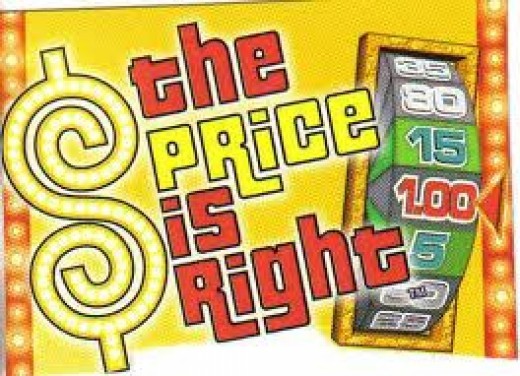Why Price Is Right
Post on: 4 Сентябрь, 2015 No Comment

September 12, 2005
By Robert Hansen, CFA Standard & Poor’s thinks mutual-fund distributor T. Rowe Price Group (TROW
; recent price, $63) maintains a formidable competitive advantage, given our view of its strong relative investment performance, global franchise, and broad line of no-load fund offerings. Furthermore, we expect it to benefit in 2006 from strong net client inflows, prudent expense growth, and equity market appreciation.
We think T. Rowe’s conservative investment philosophy and focus on diversification has contributed to what we view as superior investment performance. We anticipate additional market-share gains and strong increases in customers given T. Rowe’s consistently strong investment performance, low expense ratios, and excellent client service.
We also believe T. Rowe’s broad line of no-load mutual funds makes it easy for investors to reallocate assets among funds (which isn’t the case at some smaller fund companies), contributing to increased client retention. Finally, we see investors favoring large asset-management companies, such as T. Rowe, that have broad product offerings and have avoided regulatory issues. We recently upgraded our recommendation on the shares to 5 STARS (strong buy), from 4 STARS (buy), in part based on valuation.
NO-LOAD GIANT. T. Rowe is the successor to an investment-counseling business formed by the late Thomas Rowe Price Jr. in 1937. It’s now the investment adviser to the T. Rowe Price family of no-load mutual funds and is one of the largest publicly held U.S. mutual-fund complexes. At the end of 2004, it had $235 billion in assets under management, up from $190 billion at the end of 2003. As of yearend 2004, 75% of assets under management were invested in equity securities, and 25% were invested in bond and money market securities.
All of the T. Rowe’s funds are no-load, that is, sold without a sales commission. The company also manages private accounts for individuals and institutions. At the end of 2004, assets under management were derived about 20% to 30% from each of the following: individual U.S. investors, U.S. defined-contribution retirement plans, third-party distributors, and institutional investors.
T. Rowe’s international clients accounted for 5.5% of total assets under management at the end of 2004. Global expansion is continuing, with new offices in Sweden and Australia in 2004. T. Rowe sub-advises investment assets for Daiwa SB Investments in Japan, in which it holds a 10% interest.
RANGE OF STYLES. Revenues primarily come from fees for managing portfolios. Investment advisory fees, which accounted for 81% of 2004 revenues, depend largely on the total value and composition of assets under management. The five largest Price funds as of December 31, 2004, were: Equity Income, Mid-Cap Growth, Growth Stock, Blue Chip Growth, and Small-Cap Stock.
These accounted for nearly 24% of assets under management at that time, and 28% of 2004 investment-advisory revenues. Fluctuations in financial markets and in the composition of assets under management affect revenues and results of operations. Other revenues are obtained from billing the funds for transfer-agent and record-keeping functions, investment income and gains, and assorted services, such as discount brokerage.
T. Rowe offers mutual funds that employ a broad range of investment styles, including growth, value, sector-focused, tax-efficient, and quantitative index-oriented approaches. According to the company, its investment approach is based on a strong commitment to proprietary research, sophisticated risk-management processes, and strict adherence to stated investment objectives.
EXPENSE LEVEL. T. Rowe employs both fundamental and quantitative methods in performing security analyses, using substantial internal equity and fixed-income investment-research capabilities. Its various investment strategies also consider portfolio turnover in order to minimize trading costs and negative tax implications.
The company seeks to enhance investment returns by keeping portfolio expenses and advisory fees low compared with the majority of its peers. For example, all T. Rowe funds have expense ratios below the median of their peers as of the end of 2004, based on data from fund-researcher Lipper.
T. Rowe’s second-quarter results benefited from an 18% year-over-year rise in assets under management, to $245 billion, largely due to net inflows and market appreciation. Although that’s below the level achieved in recent quarters, we’re impressed with mutual-fund inflows of $2.8 billion, given the volatile equity markets thus far in 2005. We think the company is seeing good growth in its mutual funds, separate accounts, and sub-advised relationships.
GROWTH FORECAST. We also see significant growth opportunities for T. Rowe Price overseas, particularly in Europe, given that international clients accounted for only a modest 5.5% of total assets under management at the end of 2004. We expect headcount growth of 5% to 10% in 2005, following a 9.4% rise in 2004. We project advertising and promotion expenses to rise 15% year over year in 2005, towards the high end of the company’s 10% to 15% targeted range. We expect September-quarter earnings per share (expected to be reported in late October) of 80 cents, up from 62 cents in the year-earlier period, aided by what we view as an easy comparison.

On a full-year basis, we forecast EPS of $3.05 in 2005 and $3.60 in 2006, excluding stock option expenses, benefiting from widening operating margins and a higher level of client assets under management. We forecast 18% growth in advisory fees in 2006, aided by the continued shift that we see toward higher-margin equity products from fixed income products.
Under Standard & Poor’s Core Earnings methodology, our EPS estimates are $2.82 for 2005 and $3.36 for 2006, reflecting projected stock-option expense. We view T. Rowe’s executive compensation, including stock-option grants (which largely account for the difference between our S&P Core EPS estimates and our operating EPS estimates), as generous compared to peers.
PRICE PREMIUM. We believe T. Rowe’s shares should continue to trade at a significant premium to its industry peers, based on our view of the company’s strong relative investment performance, diversified client base, and multiple distribution channels. We also view favorably the low debt in our valuation of the shares, and we think increasing operating cash flows could be used to pay a large special cash dividend or repurchase additional shares.
Having gained about 1% thus far in 2005, the shares recently traded at nearly 18 times our 2006 EPS estimate, in line with the industry average. However, the shares have historically traded at a significant premium to peers. Our 12-month target price of $79 is equal to 22 times our 2006 EPS estimate, a premium to peers more in line with the historical premium enjoyed by the company.
We believe T. Rowe Price’s corporate-governance practices are generally sound, but we think that improvements could be made. Its board currently consists of a majority (over 50%) of independent outside directors. We view favorably that the nominating and compensation committees each comprise solely independent outside directors. However, we view executive compensation, including stock-option grants, as generous, especially given reductions at competitors, and would like to see a greater proportion of independent directors on the board.
WHAT COULD GO WRONG. Risks to our investment recommendation and target price include stock and bond market depreciation, reduced investor confidence, and potentially increased competition. Additional risks include potentially higher than expected interest rates and greater regulatory scrutiny.
We think that reduced demand or a potential deterioration of investment performance among the company’s largest funds is a potential risk given that its Mid-Cap Value, Equity Income, Growth Stock, Capital Appreciation, and Mid-Cap Growth funds each added more than $1 billion of net investor inflows and, together, accounted for $9.5 billion of the funds’ net inflows in 2004.
Analyst Hansen follows shares of financial services companies for Standard & Poor’s Equity Research Services














